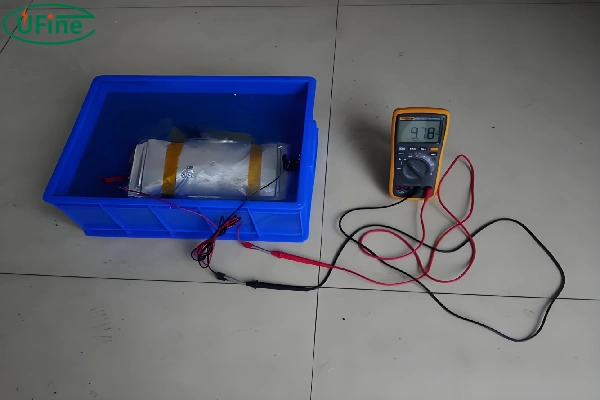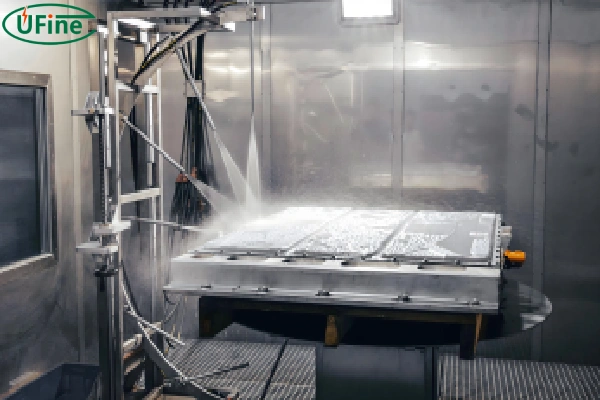Batteries are indispensable in our tech-driven world, powering everything from smartphones to electric vehicles. But have you ever wondered what happens when a battery gets wet? Water and electronics don’t mix well, and batteries are no exception. In this article, we’ll delve into the concept of waterproof batteries, discuss whether all lithium batteries are waterproof, and explain the potential consequences of water exposure. We’ll also provide practical tips for protecting your batteries from moisture, offer solutions if your battery gets wet, and outline how to safely use lithium batteries in humid environments.

Part 1. What is the waterproof battery?
A waterproof battery is specifically designed to resist water penetration. These batteries have special seals, coatings, or enclosures that prevent water from entering and damaging the internal components. Waterproof batteries are often used in devices exposed to wet conditions, such as marine electronics, outdoor gear, and certain types of wearable technology. By being waterproof, these batteries ensure reliable performance even in challenging environments where water exposure is unavoidable.
Part 2. Are all lithium batteries waterproof?
Not all lithium batteries are waterproof. In fact, most standard lithium batteries are not built to withstand exposure to water. They lack the protective seals and coatings necessary to prevent water ingress. However, there are specialized lithium batteries designed with waterproof features for specific applications. These batteries undergo rigorous testing to ensure they can withstand moisture without compromising performance or safety. Always check the battery specifications to determine if it is waterproof or water-resistant.
Part 3. What happens if a lithium battery gets wet?
When a lithium battery gets wet, several potential issues can arise:
- Short Circuit: Water can create a conductive path between the battery’s terminals, causing a short circuit. This can result in immediate failure of the battery and potentially damage the connected device.
- Corrosion: Moisture can lead to corrosion of the battery’s internal components. Corrosion degrades the materials inside the battery, reducing its capacity, efficiency, and overall lifespan.
- Swelling or Leakage: Exposure to water can cause the battery to swell or leak harmful chemicals. Swelling indicates internal damage, while leakage can pose safety hazards and damage your device.
- Fire or Explosion: In extreme cases, a wet lithium battery can overheat, leading to thermal runaway. This can cause the battery to catch fire or even explode, posing serious safety risks.
Understanding these risks highlights the importance of keeping lithium batteries dry and protected from moisture.
Part 4. How to protect the battery from moisture?
To safeguard your lithium batteries from moisture, consider these tips:
- Use Waterproof Cases: Store your batteries in waterproof cases or pouches, especially if you plan to use them in wet conditions. These cases provide an extra layer of protection against water ingress.
- Seal Connections: Ensure that all battery connections are properly sealed. Use waterproof connectors or silicone sealant to protect exposed terminals and prevent water from entering.
- Avoid Exposure: Keep batteries away from water sources and high-humidity areas. Store them in a dry, cool place to minimize the risk of moisture damage.
- Use Silica Gel: Place silica gel packets with your batteries to absorb any ambient moisture. Silica gel helps maintain a dry environment around the batteries, reducing the risk of corrosion.
- Regular Checks: Periodically inspect your batteries and their enclosures for any signs of wear, damage, or moisture ingress. Promptly address any issues to prevent water damage.
By following these protective measures, you can extend the life of your batteries and ensure their reliable performance.
Part 5. What if my battery gets wet?
If your battery gets wet accidentally, take these steps to mitigate the damage:
- Turn Off the Device: Immediately power down the device to prevent a short circuit or further damage.
- Remove the Battery: Carefully remove the battery from the device. Handle it with care to avoid causing additional damage.
- Dry It: Gently pat the battery dry with a soft, absorbent cloth. Avoid using heat sources such as hair dryers, as excessive heat can damage the battery.
- Inspect for Damage: Examine the battery for any signs of swelling, leakage, or corrosion. If the battery shows any of these signs, it may be unsafe to use.
- Dispose Safely: If the battery is damaged, dispose of it according to local regulations. Do not attempt to use a damaged battery, as it can pose significant safety risks.
Prompt action can help minimize the impact of water exposure and potentially save your battery from complete failure.
Part 6. Can I charge a wet lithium battery?
You should never charge a wet lithium battery. Charging a wet battery can be extremely dangerous. The presence of water increases the risk of a short circuit, overheating, or even fire and explosion. Before you even think about charging, ensure the battery is completely dry and thoroughly inspected for any signs of damage. If you have any doubts about its condition, it’s safer to replace the battery rather than risk using it.
Part 7. How should batteries be used safely in a wet environment?
Using lithium batteries in wet environments requires extra caution. Here are some methods to ensure their safe usage:
- Use Waterproof Enclosures: Invest in high-quality waterproof or water-resistant enclosures for your devices. These enclosures help keep moisture away from the battery and other sensitive components.
- Avoid Direct Exposure: Try to minimize direct exposure to humid conditions. For instance, store your devices in dry places when not in use and avoid leaving them in damp environments.
- Regular Maintenance: Regularly check the integrity of your battery enclosures and seals. Replace any worn-out or damaged seals promptly to maintain the waterproofing effectiveness.
- Control Environment: If possible, use dehumidifiers in storage areas to control the humidity levels. Keeping the environment dry helps prevent moisture buildup around your batteries.
- Monitor Battery Health: Frequently inspect your batteries for any signs of moisture damage, such as swelling, corrosion, or leakage. If you notice any issues, take immediate action to prevent further damage.
- Use Silica Gel Packs: Place silica gel packs in storage cases or areas where batteries are kept. These packs absorb excess moisture and help maintain a dry environment.
- Educate Users: Ensure that anyone using the batteries understands the importance of keeping them dry and following proper handling procedures in humid conditions.
By adopting these practices, you can significantly reduce the risk of moisture-related damage and ensure the safe and efficient operation of your lithium batteries, even in humid environments.
Part 8. Final thoughts
Waterproof batteries are a crucial innovation for ensuring the reliability and safety of devices used in wet or humid conditions. While not all lithium batteries are waterproof, understanding how to protect and manage them can prevent significant damage and enhance their longevity. By following the tips provided for protecting batteries from moisture, knowing what to do if they get wet, and safely using them in humid environments, you can make sure your devices remain powered and functional in any situation.
Remember, the key to extending the life of your lithium batteries is proactive care and prompt action when issues arise. By staying informed and prepared, you can keep your batteries safe and your devices running smoothly.
Related Tags:
More Articles

LiPo Battery Discharge Rate Guide & Calculation Tips
Understand LiPo battery discharge rates, C-ratings, and how to calculate max current. Essential guide for RC, drones, and electronics users.
High‑Capacity 3S LiPo Batteries: 5000 mAh vs. 10000 mAh
Compare 3S LiPo 5000mAh vs 10000mAh batteries by weight, power, and use. Find the best fit for your drone, RC car, or boat setup.
Top 5 Applications for Small 3S LiPo Batteries
Small 3S LiPo batteries power drones, RC gear, wearables, and robotics with high energy and low weight. Making them ideal for compact electronics projects.
Building and Charging Your Own 3S LiPo Pack: A Step‑by‑Step Guide
Learn how to build, balance, and charge a 3S LiPo battery pack safely at home with this complete DIY guide for hobbyists and beginners.
How to Choose the Right LiPo Battery Plug Type?
Discover the best LiPo battery plug types, how to choose them, and expert tips for safe usage, soldering, and maintenance.





